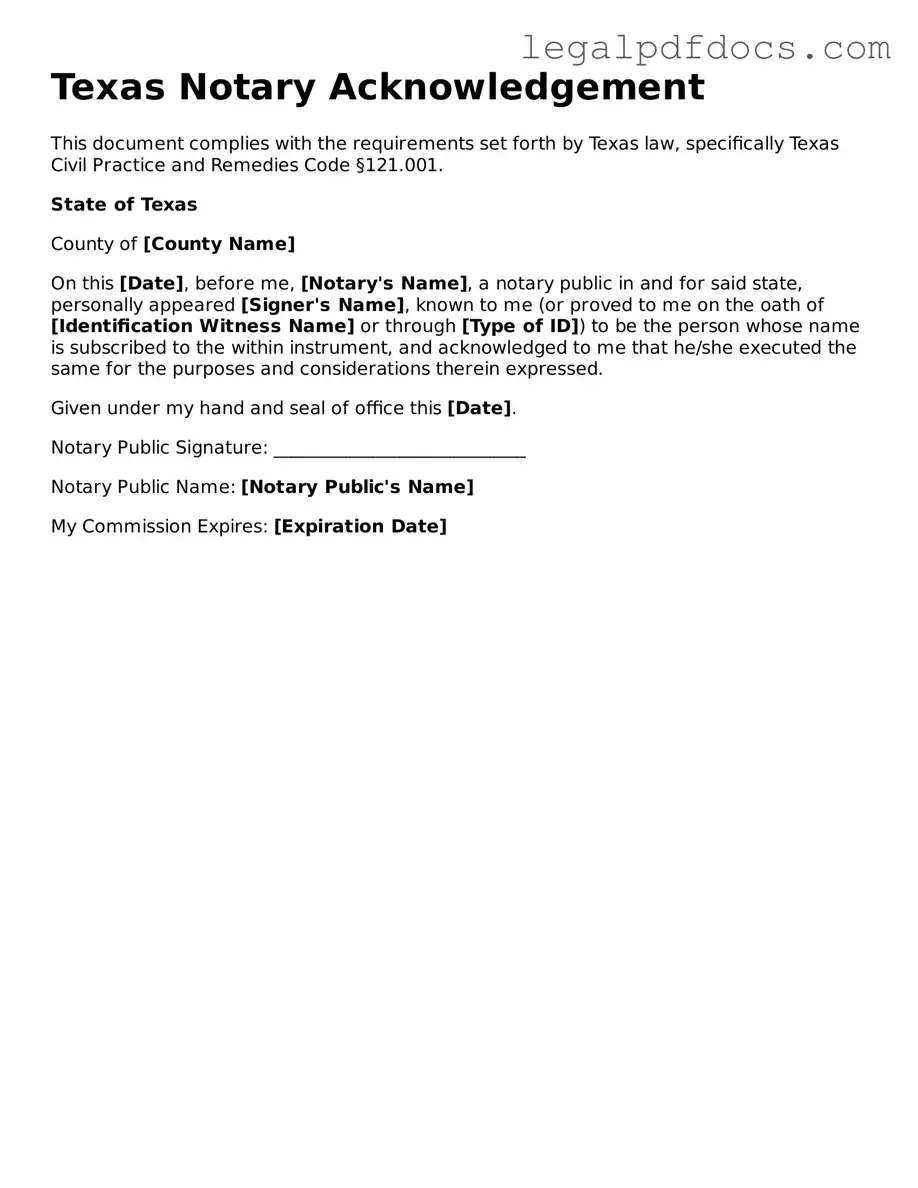Official Notary Acknowledgement Form for Texas
The Texas Notary Acknowledgement form is a legal document used to verify the identity of individuals signing a document. This form ensures that the signatures are authentic and that the signers are aware of the contents of the document they are signing. Understanding how to properly complete this form is essential for anyone involved in legal transactions in Texas.
To fill out the Texas Notary Acknowledgement form, click the button below.
Open Notary Acknowledgement Editor Here
